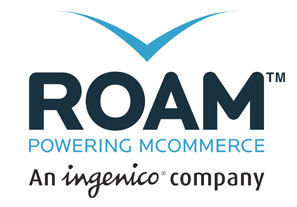What mPOS Needs To Move Up-Market

The number of mobile point of sale terminals worldwide jumped from 4.5 million to 9.5 million between 2011 and 2012. Analysts predict that over the next five years, mPOS terminals will continue to proliferate, reaching 38 million by 2017.
Those findings come from PYMNTS’ June 2013 MPOS Tracker: one edition of our monthly report designed to organize the mPOS ecosystem. June’s tracker emphasized value, distribution and scale as three key factors mPOS players are focusing on as they fight to grab their slices of the expanding mobile payments pie.
But while mPOS solutions are becoming increasingly prevalent tools for merchants of all sizes, many in the industry are now making a concerted effort to move up-market. Ken Paull serves as CEO of ROAM: one company that’s making an up-market push, and as such, is especially focused on one of the June Tracker’s core focuses – scale.
Market Platform Dynamics CEO Karen Webster spoke with Paull about the challenges ROAM faces as it makes this up-market move, as well as how the trends revealed in June’s MPOS Tracker mesh with what he sees in the industry today.
According to Paull, value and distribution certainly play a role in the growth of any mPOS solution. Paull cited value as “a baseline requirement” needed to be competitive in the market, and called distribution, especially the “speed and ease of self-boarding” a “key issue as well.”
Yet Paull singled out scale as the most critical of the three, and noted the changes that many mPOS players are making in this area today.
“With scale, I think that’s very critical because what we’re seeing is a lot of players like the Squares and others who have been out there competing at the low end, we’re seeing that that’s a difficult equation to make profitable, and they’re trying to move up-market, as we have been,” Paull said. “But I think it really requires a different product set to do, so it’s not just a matter of repositioning your sales and marketing efforts.
It takes a whole different solution set, in my opinion.”
And according to Paull, who admits he’s been “beating this drum for a while,” integration is the key to creating an mPOS solution that can succeed up-market. Paull noted that, as with physical POS solutions, mPOS platforms need to expand to become more than pure payments tools to appeal to larger merchants.
“I think merchants are really looking for a broader mobile solution than just the payment application, and to do that, it requires an integrated solution, “ he said.
To hear why Paull believes integrated solutions are key for up-market mPOS success, listen to the full podcast below.

*If you have trouble with the audio player above, click here.

Ken Paull, CEO of ROAM
Ken has over 20 years in senior management roles in the electronic payments industry including senior vice president at RBS Lynk (now WorldPay), vice president at Triton Systems and general manager at VeriFone. He was responsible for building and rapidly growing what is now WorldPay’s national account payments division while also directing the turnaround of what had been a declining ATM processing business. While at Triton, the company surpassed NCR as the second largest domestic ATM supplier and also became the global leader in retail ATM deployments. At VeriFone, Ken built their major account, retail division which has become one of the largest segments of their business. Most recently, Ken has held positions of board director at Access to Money, director at Market Platform Dynamics and president of Pax. A native of the Boston area, Ken holds a B.S. in Marketing and Communications from Babson College, as well as an MBA in Telecommunications Management from Golden Gate University.